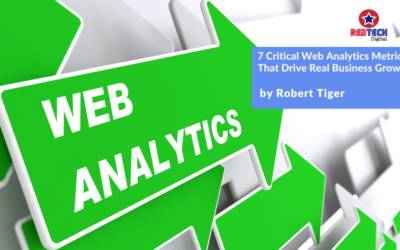The Rise of AI in Search
One of the most significant developments in SEO is the increasing role of artificial intelligence in search algorithms. For instance, Google’s Multitask Unified Model (MUM) represents a major leap forward in search engine capabilities, offering more intuitive and context-aware search results. Consequently, SEO strategies must now evolve beyond traditional keyword optimization to focus on comprehensive topic coverage and user intent.
In addition, this shift in approach means content creators must look beyond isolated keywords. Instead, successful SEO strategies must embrace a holistic method, addressing broader topics and the related questions users might ask. Ultimately, this requires a deeper understanding of your audience’s needs, as well as the various ways they might search for information related to your content.
Content Strategy Evolution: Topic Clusters and Comprehensive Coverage
In 2024, successful content strategies revolve around building comprehensive topic clusters rather than isolated pieces of content. This approach involves creating a central pillar page that provides a broad overview of a topic, supported by multiple detailed articles that explore specific aspects in depth. This structure not only helps search engines understand the relationships between your content but also provides a better user experience by guiding visitors through a logical content journey.
The key to implementing this strategy effectively is to:
-
Identify core topics relevant to your business
-
Create comprehensive pillar content that covers these topics broadly
-
Develop supporting content that delves into specific aspects
-
Implement strategic internal linking to connect related content
-
Regularly update and expand your content clusters with new information
Multimedia Integration and Visual Search Optimization
With the growing importance of visual search and mixed media results, incorporating diverse content formats has become crucial for SEO success. Google increasingly displays video, image, and other multimedia content in search results, particularly for “how-to” queries and informational searches. This trend makes it essential to diversify your content strategy beyond text-based articles.
To optimize multimedia content effectively:
-
Use descriptive file names and alt text for images
-
Optimize video content with accurate titles, descriptions, and transcripts
-
Consider creating content in multiple formats to cater to different user preferences
-
Ensure multimedia content adds value and enhances user understanding
-
Optimize for visual search platforms like Google Lens
Technical SEO and Core Web Vitals
User experience metrics continue to play a crucial role in search rankings, with Core Web Vitals serving as key indicators of website performance. In 2024, particular attention should be paid to:
-
Largest Contentful Paint (LCP): Ensuring main content loads quickly
-
Cumulative Layout Shift (CLS): Minimizing unexpected layout changes
-
First Input Delay (FID): Maintaining responsive user interactions
For businesses without extensive technical resources, there are several approaches to improving these metrics:
-
Utilize built-in optimization tools provided by popular website platforms
-
Implement basic optimizations like image compression and browser caching
-
Regular monitoring using Google PageSpeed Insights
-
Focus on mobile-first optimization
-
Consider using content delivery networks (CDNs)
Local SEO and Voice Search Optimization
Voice search continues to influence local SEO strategies, with an increasing number of users relying on voice-activated devices for local business information. This trend emphasizes the importance of optimizing for natural language queries and local search intent.
Key strategies for local SEO success include:
-
Maintaining an up-to-date Google Business Profile
-
Implementing proper schema markup for local business information
-
Optimizing for conversational keywords and phrases
-
Building a strong review management strategy
-
Ensuring mobile-friendly website design
Link Building and Digital PR
While backlinks remain a crucial ranking factor, the focus has shifted decisively toward quality over quantity. In 2024, successful link-building strategies center on earning high-quality backlinks through valuable content and strategic relationships. This approach often involves:
-
Creating shareable, reference-worthy content
-
Developing interactive tools and resources
-
Building relationships with industry influencers and journalists
-
Participating in industry discussions and events
-
Contributing expert insights to relevant publications
AI-Generated Content: Finding the Right Balance
The emergence of AI content generation tools has created both opportunities and challenges for SEO. While these tools can help scale content production, they should be viewed as assistive technologies rather than complete replacements for human creativity. The key to success lies in finding the right balance:
-
Use AI tools for initial drafts and idea generation
-
Ensure human editors review and enhance AI-generated content
-
Add unique insights and expertise to differentiate your content
-
Focus on providing genuine value to your audience
-
Maintain a consistent brand voice across all content
Recovery Strategies for Algorithm Updates
When faced with traffic losses following core updates, it’s essential to take a systematic approach to recovery:
1. Analyze traffic patterns and affected pages through analytics
2. Review content quality and relevance against competitors
3. Assess technical issues that might impact rankings
4. Update and refresh content regularly
5. Monitor user engagement metrics and make improvements accordingly

Over 75% of Marketers Use Web Analytics

Analytics Boosts ROI by 20%

90% of Businesses See Improved Customer Insights

Web Analytics Increases Conversion Rates by 50%
Mobile-First and Page Experience
With mobile traffic continuing to dominate, optimizing for mobile users is more critical than ever. Key considerations include:
-
Responsive design that adapts to all screen sizes
-
Touch-friendly navigation elements
-
Fast loading times on mobile networks
-
Readable font sizes and proper spacing
-
Optimized images for mobile devices
-
Easy-to-use forms and CTAs on mobile
-
Simplified navigation for mobile users
Looking Ahead
As we move through 2024, successful SEO strategies will continue to prioritize user experience and value delivery above all else. The key to maintaining and improving search rankings lies in:
-
Adapting to AI-driven search evolution
-
Creating comprehensive, user-focused content
-
Maintaining technical excellence
-
Building authentic authority through quality backlinks
-
Staying responsive to algorithm updates and industry changes
Measuring Success and ROI
To ensure your SEO efforts are paying off, focus on tracking these key metrics:
-
Organic traffic growth
-
Conversion rates from organic traffic
-
Page load times and Core Web Vitals scores
-
Bounce rates and time on page
-
Rankings for target keywords
-
Local search visibility
-
Mobile vs desktop performance
-
User engagement metrics
By focusing on these core aspects while remaining flexible enough to adapt to new developments, businesses can build a strong foundation for sustainable SEO success in 2024 and beyond.
Remember that SEO is no longer just about rankings—it’s about creating a better online experience for your users while helping search engines understand and value your content appropriately. Success comes to those who can balance technical optimization with genuine value creation for their audience, always keeping the end user’s needs at the forefront of their strategy.
Key Features of Web Analytics Tools
Essential Analytics Features for Marketers
Real-Time Data Tracking
Customizable Dashboards
Advanced Segmentation
Comprehensive Reporting
Understanding Web Analytics
The Role of Web Analytics in Digital Marketing
Explore Our Latest Insights on Digital Marketing
The Evolution of B2B Lead Generation: Why Traditional Methods Are Failing in 2024
Modern B2B lead generation is undergoing a dramatic transformation in 2024, forcing companies to rethink their entire approach to generating and qualifying leads. In today's rapidly evolving B2B landscape, traditional lead generation strategies are becoming...
Modern Lead Qualification: Beyond MQL and SQL in 2024
Lead qualification in B2B marketing has reached a critical turning point. Traditional lead qualification processes and frameworks are becoming increasingly obsolete in today's digital landscape. As business-to-business lead qualification evolves, organizations must...
Modern Email Automation: The Ultimate Guide to Building High-Converting Sequences in 2024
Modern email automation strategies 2024 are revolutionizing the way businesses connect with their customers. Email automation remains a cornerstone of digital marketing, yet surprisingly, most businesses are stuck in outdated practices. In fact, recent data reveals...
7 Critical Web Analytics Metrics That Drive Real Business Growth
In today's digital landscape, businesses need to focus on critical web analytics metrics that drive real business growth rather than surface-level data points. Moreover, while traditional metrics like pageviews have long been the go-to measurement for website success,...
Marketing Automation in 2024: Debunking Myths and Revealing What Actually Works
Marketing automation has undeniably transformed the digital landscape. However, many businesses still struggle to separate fact from fiction when it comes to implementing these powerful tools. Let’s explore the reality behind common marketing automation myths and...
Performance Max vs. Traditional Google Ads: The Ultimate Guide for 2024
In the ever-evolving landscape of digital advertising, marketers are increasingly faced with a crucial decision: should they stick with traditional Google Ads campaigns or embrace the AI-driven Performance Max? Furthermore, this choice has become even more pressing as...








